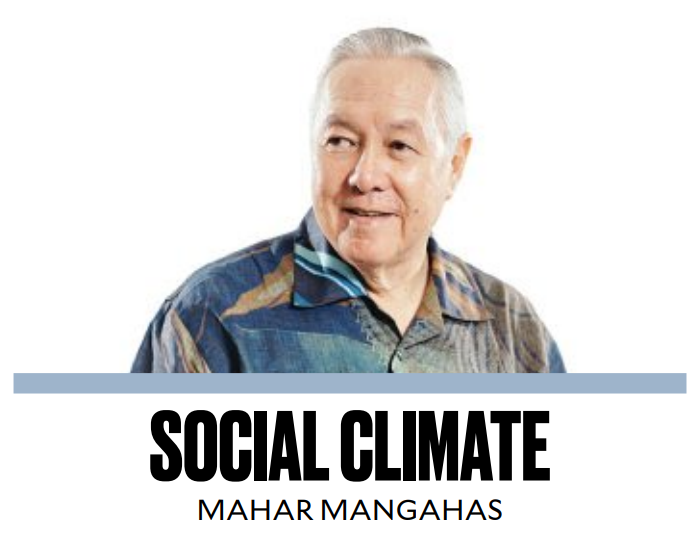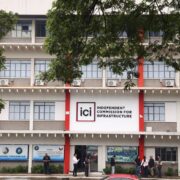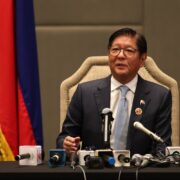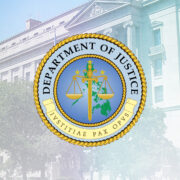Our untold economic history

Recently I began a talk at the University of the Philippines by asking the audience their estimate of Philippine poverty at present, in 2024. Of the smattering of answers, none, thank goodness, mentioned crowds in shopping malls or new cars on the roads.
What was disappointing, but not surprising, was the unawareness of Self-Rated Poverty (SRP) at 46 percent last March—as posted on April 25 on the Social Weather Stations (SWS) webpage, www.sws.org.ph, and repeated in my column on May 4 (“When hunger and poverty go opposite,” 5/4/24).
The number 46 percent is already part of formal history, historian and fellow columnist Ambeth Ocampo assures me, not only due to its scientific reliability but also, and more so, due to being permanently recorded and publicly accessible.
Data need to be carefully collected, recorded, reported to the public, listened to, read, shared, and taught to others. This should be done, not occasionally, but repeatedly, at short intervals, to convert the series of observations into a history over the time period covered. A history enables one to see when and how something changes, up or down, to examine its relationship to other factors, and work out how to influence it.
In 2024, there has been no other poverty survey except that of the first quarter Social Weather Survey fielded last March. The second quarter round was fielded in late June, is being processed and will be reported soon. The third and fourth quarter rounds will be done on schedule. The SWS quarterly SRP figures will continue to be more current than the biennial poverty figures of the Philippine Statistics Authority, still incomplete for 2023 and next due for the reference year 2025.
Lessons from survey history. The first lesson is that the poverty problem is very much larger than officially depicted. At present, a 46 percent plurality of households call themselves mahirap, only 23 percent say they are hindi mahirap, and 30 percent identify, without prompting, with a borderline between the two. The record-highest percentage Not Poor is 30; that of the Borderline is 35. A program that helps the Borderline is not as bad a “leakage” as helping the Not Poor.
The people’s thresholds (poor families’ home-expense budget to avoid being poor) are realistic and modest. Occasionally they fall, despite cost-of-living inflation, indicating belt-tightening; when they rise, it may be partially due to belt-loosening. These thresholds exclude the cost of earning (like commuting, mobile phone load, and internet), and the cost of surviving (like protection/recovery from COVID-19).
The trickle-down effect of general economic growth is, precisely that, a trickle. Even though gross national income per person, corrected for inflation, more than doubled between 1983 and 2022 (latest point available), SRP fell by merely 9 points, from 55 percent in 1983 to 46 percent in early 2024.
The SRP percentage has been volatile in the short-run: in 142 surveys since 1983, SRP hit 74 in 1985, 72 in 1992, and some catastrophic height in 2020 (when SWS missed three of its standard face-to-face rounds due to the lockdown). It subsided to 43 when hyperinflation ended in 1987, rose back to the 60s and 50s, settled to an all-time low 38 in 2019, and has been in the mid-40s since 2021. It has not fully recovered to pre-pandemic times.
Geographically, poverty is worse in the south, whereas hunger is worse in the north, and sometimes worst of all in Metro Manila.
Time-series analysis shows that food inflation matters most, and unemployment is secondary. The effect of GDP growth on poverty is statistically insignificant though in the right direction. Cross-section analysis shows the poverty of schooling is what persistently holds back Filipinos from the capacity to earn their way ahead.
Poverty, hunger, joblessness, gaining/losing from the past, optimism/pessimism on the future, satisfaction with life, and happiness all relate to each other as expected, but not in fixed proportions. We all suffer/enjoy some of each, sometimes.
Yet history textbooks pay so little attention to subjective well-being. The rich and powerful don’t like to be reminded of the poor. The media gives much more space to polls of political popularity.
The famous few are remembered in Big History, which is mostly political history. The anonymous masses are at the heart of Little History, which is mostly economic history. But both histories need to be told.
mahar.mangahas@sws.org.ph
Dr Mahar Mangahas is a multi-awarded scholar for his pioneering work in public opinion research in the Philippines and in South East Asia. He founded the now familiar entity, “Social Weather Stations” (SWS) which has been doing public opinion research since 1985 and which has become increasingly influential, nay indispensable, in the conduct of Philippine political life and policy. SWS has been serving the country and policymakers as an independent and timely source of pertinent and credible data on Philippine economic, social and political landscape.


















